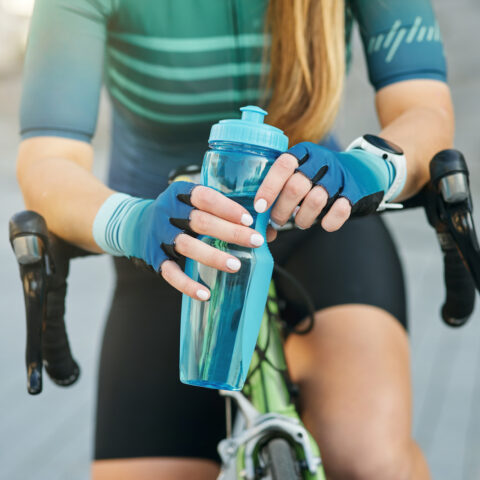The Best Paleo Snacks for Skiing & Other Winter Sports

Some people hibernate when the temperature drops. Others welcome snow with open arms, eager to get out skiing, snowboarding, snowshoeing, sledding, ice climbing, and hiking.
If you’re in the latter camp (which we think is a lot more fun), it’s essential to fuel your frosty adventures with the right snacks. These tasty, Paleo-friendly picks will keep you energized all winter.
Four Questions to Ask Before You Pack Your Winter Snacks
Prepping food for your winter outing isn’t quite the same as it is for a hike in fair weather. You’ll still need to consider factors like weight and caloric density, but unlike warm-weather hiking, you’re basically playing in a giant refrigerator. That means you can safely pack perishables like meats, fish, and eggs (bonus!). Here’s what to ask yourself before you pack those snacks.
1. Will It Freeze?
If you’re planning an all-day trip at 32°F or below, bear in mind that some foods can transform into tooth-breaking solid blocks in a backpack. Energy bars with nuts are prime offenders, so if you love them, make sure to stow them in an inside jacket pocket, close to your body heat.
Water reservoirs and bottles can also freeze. To prevent this, store bottles upside down so the ice will form on the bottom of the bottle first. If you’re using a bottle with an insulated drink tube, gently blow the water back inside the reservoir after you sip so it doesn’t get trapped in the hose and freeze more quickly.
2. Is it nutrient-dense?
Winter sports often demand high exertion: You’re slogging through snow, climbing hills, and sliding with speed, all of which burn lots of calories. Not only that, but your body is expending extra energy just to keep warm. This means you should focus on foods that pack a lot of calories for their weight, such as meats, nut butters, and dried fruits.
3. How heavy is it?
If you’re venturing far enough away from your car, remember that you have to haul snacks in your pack (or in your pocket). Again, lightweight items like fruit leather or homemade jerky are good choices because they’re still calorically dense.
4. Will I stay hydrated?
You might not notice it the way you do when you’re sweating on a hot day, but your body is still losing moisture during cold-weather exertions. [1] Make sure you’re drinking regularly, whether it’s refreshing water or something more warming, like bone broth.
Our Favorite Paleo-Friendly Winter Snacks
Meat
One of the best things about winter outdoor adventures: Fresh meat is back on the menu. Pre-slice cooked steak—maybe last night’s sheet pan flank steak or peppercorn-crusted tenderloin—and pack it in a lightweight storage container. Do the same with lamb steak or pork chops (anything that also tastes good cold will do). Meatballs packed in sauce also travel well and taste great on the go, just don’t forget to pack a fork! When temperatures are below the low 30s, these meats should last the day in your backpack.
Fish
You can include fish in your outdoor diet year-round with foil pouches of tuna or salmon, which are light and shelf stable. But in winter, consider expanding your options to premade tuna salad (think tuna, veggies, and Paleo mayo) and glazed salmon served cold. As with meats, pack them in a lightweight storage container.
Eggs
Hardboiled eggs are easy for snacking when hunger strikes. Simply peel them before heading out and store in a hard-sided container to ensure they travel well. You could also whip up a batch of egg muffins with veggies for a portable, nutritious, and delicious winter snack.
Nuts
Nutrient-dense nuts with ideal omega-6:omega-3 ratios—such as walnuts and macadamia nuts—work well in the winter on their own or in a snack mix (not so much when they’re made into bars, which get hard in the cold).
Nut butters, which can be found in individually wrapped pouches, are also convenient. Or bring homemade Paleo hummus made with roasted beets and pine nuts.
Fruits & Veggies
Here’s another way to take advantage of winter’s natural refrigeration: Pack cooked veggies. In winter, herby roasted root vegetables such as beets, sweet potatoes, turnips, and carrots usually stay soft and still taste wonderful cold. Fresh fruits remain an outdoor staple (though keep in mind they’re heavier than the dried stuff); we lean toward seasonal treats such as mandarin oranges and pomegranate seeds in the winter.
Dried figs, apricots, and dates are also sweet choices, but pack them in an inside jacket pocket to prevent them from solidifying in the cold. Only enjoy these in moderation though—we don’t recommend that you let your blood sugar spike too much.
Liquids
Water is essential, of course, but an icy glug doesn’t always sound appetizing when it’s cold. Mix things up with a thermos of herbal tea or bone broth, which will warm you from the inside out and encourage you to drink up.
And Finally…
You’re working hard out there—you deserve a little treat, like one of these Paleo-friendly gingerbread cookies or hot cocoa cookies.
References
[1] Nutritional needs in cold and in high-altitude environments, AJ Young, MN Sawka, KB Pandolf – 1996 – Washington, DC: National Academy https://www.ncbi.nlm.nih.gov/books/NBK232870/
Elisabeth Kwak-Hefferan
Elisabeth Kwak-Hefferan is a Montana-based freelance journalist who specializes in the outdoors, science, environment, and parenting.
More About The Author



